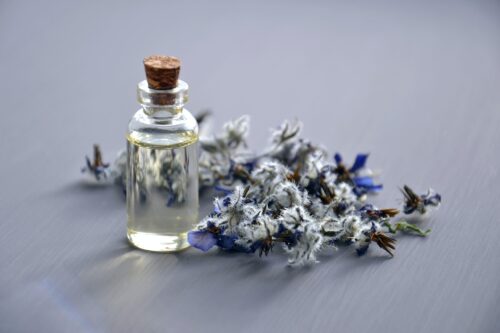
The New England Journal of Medicine
In 2007, The New England Journal of Medicine (NEJM) published a paper titled "Prepubertal Gynecomastia Linked to Lavender and Tea Tree Oils." This paper immediately caused panic among numerous essential oil enthusiasts.
However, this 2007 paper did not confirm that lavender and tea tree oils are endocrine disruptors. The study had only three subjects (boys aged 4, 7, and 10), which is a small sample size and cannot represent all young males. It is said that these boys used a "certain product" containing lavender or tea tree oil, but the paper did not mention whether this product also contained other synthetic chemicals such as parabens, artificial fragrances, and phthalates, which are known estrogenic substances and endocrine disruptors.
Researchers tested the effects of lavender and tea tree oils by placing human cells in a culture dish and detected a certain level of estrogenic activity. However, this could be due to the use of dimethyl sulfoxide (DMSO) solvent to dilute the oils, which is also a known estrogenic substance.
Furthermore, the study did not indicate the purity of the essential oils used by the boys. If the oils came from unreliable sources, they might have been adulterated or contaminated with other chemicals (some essential oil manufacturers process their oils to ensure consistency in chemical composition for each batch), which could also be endocrine disruptors.
This paper received many criticisms, including four "to the editor" letters protesting the publication of this study for its lack of rigor. The authors later responded, acknowledging the lack of rigor in the paper but still hoping to explore and avoid other causes that may contribute to precocious puberty.
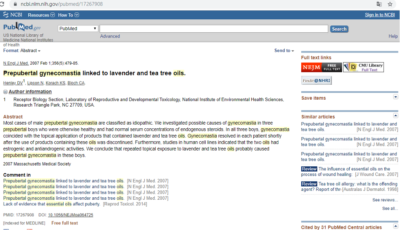
Better Research Disproves Estrogenic Effects of Lavender and Tea Tree Oils
Now we can disregard the 2007 NEJM paper as it has weak connections in many aspects. Let's look at some specific studies that use standardized estrogen testing criteria and larger sample sizes.
A 2014 paper published in the Journal of Reproductive Toxicology demonstrated that lavender oil does not have estrogenic effects, even at concentrations 30,000 times higher than the estimated average concentration in cosmetics containing lavender oil. Multiple studies have also confirmed that tea tree oil does not have estrogenic effects.
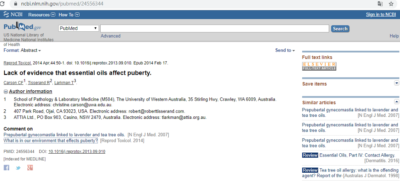
The Issue of Premature Puberty Caused by Periodic Hype around Essential Oils
In 2015, the Journal of Pediatrics and Child Health reported a case of a 14-month-old female infant who developed breast development (one of the characteristics of precocious puberty) due to the use of wet wipes, bath products, shampoo, lotion, and soothing cream containing lavender oil. During the examination, estradiol levels were normal and not elevated, but there were slight elevations in alpha-fetoprotein and prolactin, which are markers related to lactation. After discontinuing the use of products containing lavender, the breast development resolved, and the levels of alpha-fetoprotein and prolactin returned to normal. Additionally, some laboratory studies have found that lavender oil can have estradiolic effects but cannot increase estradiol concentration in the blood.
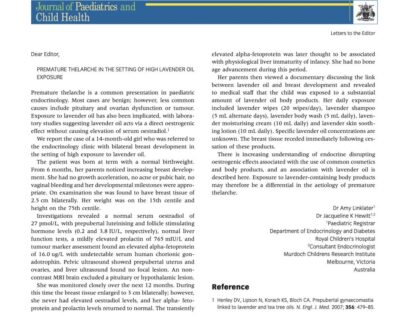
Then there are the papers from 2016 and 2019.
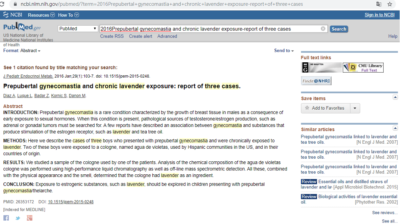

These case reports, like the 2007 NEJM paper, do not mention whether the "certain product" containing lavender oil also contained other known estrogenic substances and endocrine disruptors such as parabens, artificial fragrances, and phthalates. Moreover, it is unknown whether they were affected by other environmental hormones.
Claiming this connection based on individual case reports and cell experiments cannot be considered as a rigorous conclusion. Moreover, both of them have not undergone review by the Institutional Review Board (IRB) for human testing, which means this research does not establish a link from basic to clinical research. For a more rigorous study, it should involve human trials to directly confirm whether the use of essential oils leads to premature puberty and affects estrogen levels. Of course, this also involves ethical considerations in research.
Endocrine Disruptors
The endocrine system is a complex collection of different glands in the body that directly secrete various hormones into the bloodstream. These hormones are then transported through the blood to target organs that require them. The hormones produced by the endocrine system are responsible for regulating metabolism, growth and development, cellular functions, sexual functions, sleep, emotions, and more. Any imbalance in the endocrine system can lead to dysfunction in certain organs and consequently result in diseases. The factors causing imbalance in the endocrine system are known as endocrine disruptors. Due to advancements in technology, many endocrine disruptors are actually synthetic, man-made substances, often referred to as "environmental hormones."
Common Environmental Hormones
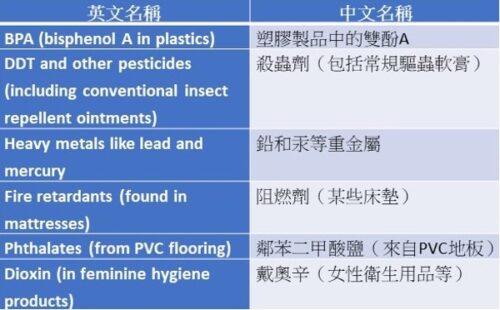
Diseases Caused by Endocrine Disruptors
1. Failure of testicles to descend into the scrotum in young males
2. Attention deficit hyperactivity disorder (ADHD) in children
3. Impaired neurodevelopment in children
4. Thyroid disorders
5. Prostate cancer in males
6. Breast cancer and uterine fibroids
7. Sexual dysfunction
8. Premature puberty
Essential Oils Listed as Suspected Endocrine Disruptors
Apart from lavender and tea tree oils, clary sage and thyme essential oils have also been listed as suspected endocrine disruptors. Outdated studies claimed that clary sage and thyme essential oils should not be used for cancer treatment because they were found to have estrogenic effects. However, we now know that these essential oils, just like tea tree and lavender, do not mimic estrogen and therefore are not endocrine disruptors.
In fact, a study published in the Journal of Phytotherapy Research in 2014 examined 22 postmenopausal women and found that inhaling clary sage essential oil reduced cortisol levels by 36% and improved thyroid-stimulating hormone (TSH) levels. As for thyme essential oil, a report published in the Journal of Experimental Biology and Medicine demonstrated its ability to balance progesterone levels in the blood.
Conclusion with Traditional Chinese Medicine
Does essential oil really cause premature puberty? This question is similar to the doubts raised about the use of traditional Chinese medicine (TCM). TCM is often the precursor of hormones but is not equivalent to hormones themselves. TCM has been clinically proven to improve premature puberty, and there are scientific papers supporting this. The key is to correctly apply differential diagnosis and treatment in TCM.
There are no essential oils that actually contain hormones, but there are essential oils that can regulate hormone levels. We can even say that with proper usage and selecting products from reliable sources, using essential oils will not cause premature puberty!!!
• Hormone-like essential oils: Cypress, clary sage
• Stimulating hormones: Clary sage, jasmine attar (when used separately, the effect is not good)
• Estrogen-like: Clary sage
• Promoting progesterone: Vitex
• Similar to cortisone: European red pine, stimulates endocrine system (insulin, adrenal glands, gonads, etc.)
In reality, the regulation of hormones depends on the individual's constitution and the proper use of essential oils. True lavender is suitable for Yin-deficient constitutions, while tea tree oil is used for damp-heat constitutions. Clinical application of Chinese medicine aromatherapy is unlikely to cause excessive Yang energy. Many times, children with premature puberty have constitutions that involve excessive internal heat (commonly explained as high levels of "fire" in the body). It can be caused by dietary habits, such as frequent consumption of grilled, fried, spicy, and heat-inducing foods. Even if it's not related to snacking, it may still contribute to signs of premature puberty. The most easily overlooked aspect is emotions. Absorbing too much information can lead to premature mental maturity, and liver fire stirring up internal heat can also contribute to premature puberty."
